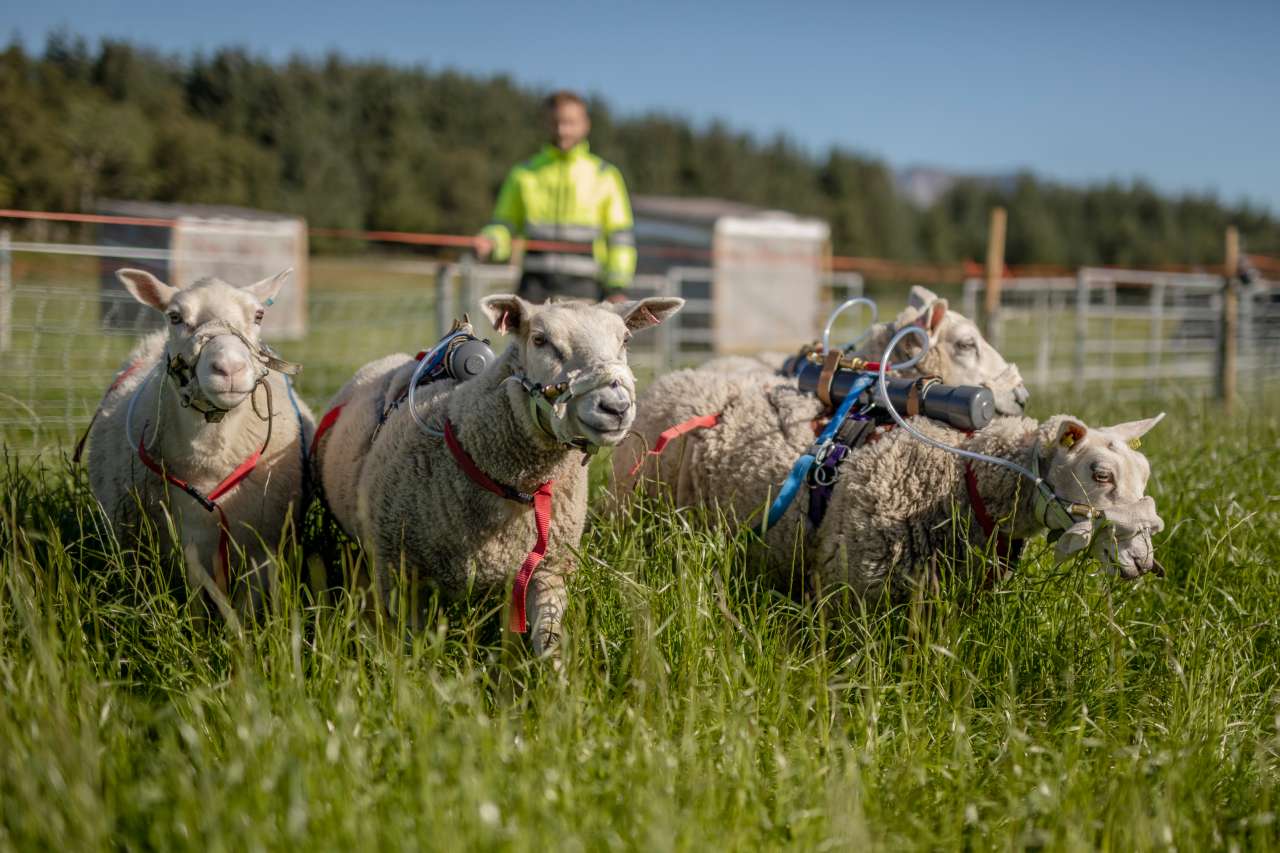Greenhouse gas emissions from grazing sheep

Photo: Therese Jægtvik
Ruminants are responsible for around 5% of the annual greenhouse gas emissions in Norway. How can we be sure of that when no one knows the production of greenhouse gas emissions from Norwegian sheep and cattle during grazing?
For the first time in Norway, researchers have tried to measure enteric methane (CH4) emissions from sheep grazing a cultivated pasture.
The sheep each have an oval gas container secured on their back with a harness. From this container, a plastic tube leads to the nose. The gas container uses a vacuum system to collect the greenhouse gases (CH4 and CO2) that are emitted when the sheep breathes out.
"We use the SF6-tracer gas technique," explains Vibeke Lind. The sheep has a small bolus in the rumen, the size of an AA battery. The bolus contains the gas SF6 (Sulphur hexa-fluoride) which is released at a known release-rate. The SF6 is used as tracer gas to measure the emissions of other greenhouse gases.
"If we see that we are capturing 70% of SF6, then we assume that we are also capturing 70% of the CH4 and CO2 emissions."
Grass height, dry matter production and nutritional content of the grass was measured on the day the animals were released into the pasture, and when they were removed again. The researchers thereby knew how much the sheep had eaten.
Although 90–95% of greenhouse gases are emitted through belching, a certain volume is also emitted in the other direction. As part of the project, the researchers therefore collected faecal samples from the last three days of each grazing period.
The data from the gas containers and faecal samples will provide a good picture of the total greenhouse gases emissions from the sheep.
"We know that the animals emit less methane when they are grazing on plants with high digestibility, because they utilize more of the energy. We believe this is similar to greenhouse gas emissions being reduced indoor when the animals are fed concentrate and high-quality roughage.," Lind concludes.
Contacts

Contacts

